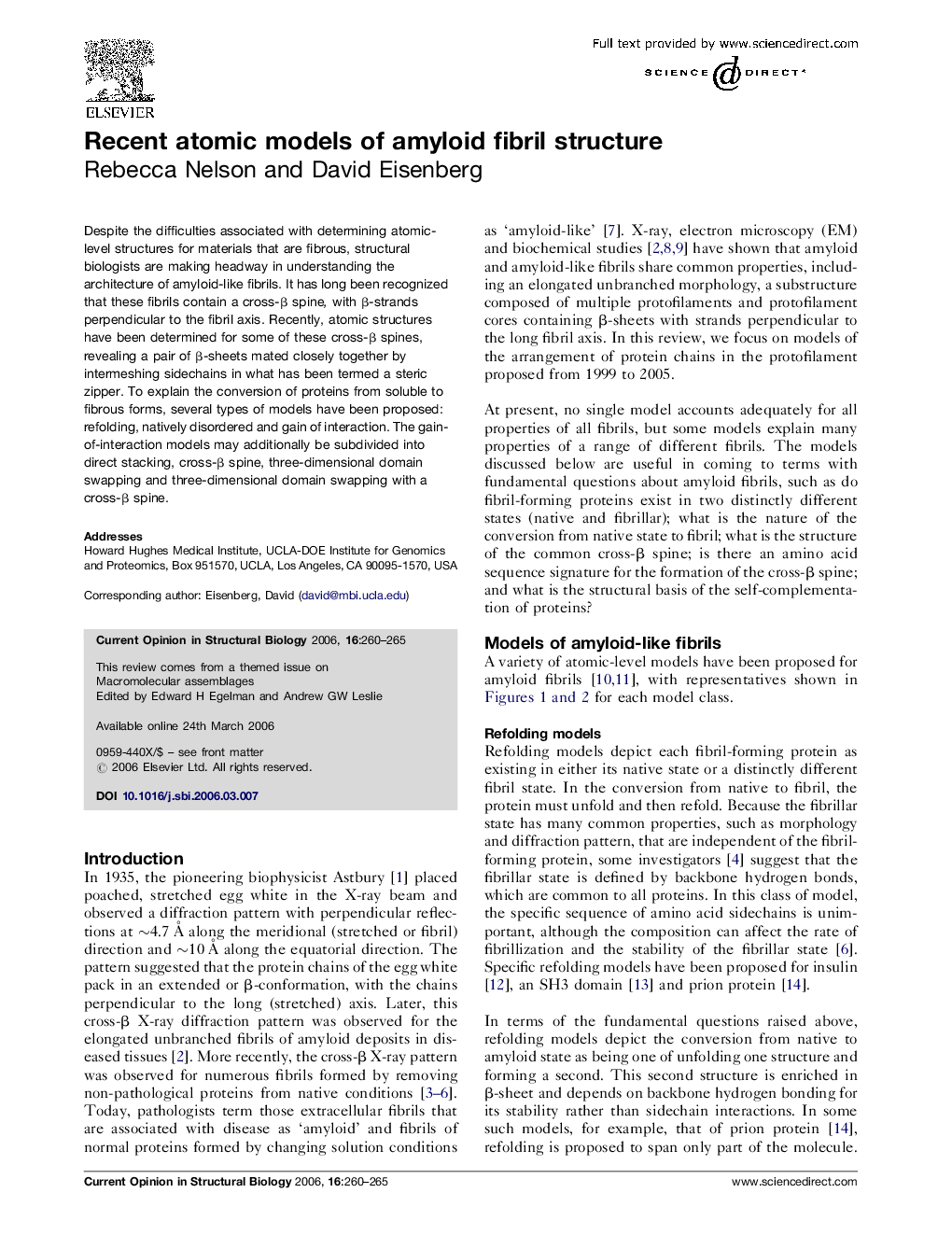| Article ID | Journal | Published Year | Pages | File Type |
|---|---|---|---|---|
| 1979934 | Current Opinion in Structural Biology | 2006 | 6 Pages |
Abstract
Despite the difficulties associated with determining atomic-level structures for materials that are fibrous, structural biologists are making headway in understanding the architecture of amyloid-like fibrils. It has long been recognized that these fibrils contain a cross-β spine, with β-strands perpendicular to the fibril axis. Recently, atomic structures have been determined for some of these cross-β spines, revealing a pair of β-sheets mated closely together by intermeshing sidechains in what has been termed a steric zipper. To explain the conversion of proteins from soluble to fibrous forms, several types of models have been proposed: refolding, natively disordered and gain of interaction. The gain-of-interaction models may additionally be subdivided into direct stacking, cross-β spine, three-dimensional domain swapping and three-dimensional domain swapping with a cross-β spine.
Related Topics
Life Sciences
Biochemistry, Genetics and Molecular Biology
Biochemistry
Authors
Rebecca Nelson, David Eisenberg,
